The Division of Responsibility
For some parents, one of the most stressful aspects of raising a child is meal times and the constant anxiety they feel that their children are not eating the 'right' things and are not going to receive 'proper' nutrition.
The Division of Responsibility is a concept that can reduce the stress parents and children feel at mealtime.
While it's important to offer healthy food choices, it's equally important to divide the responsibility of feeding between parents and children. This is called the Division of Responsibility (DoR) in feeding, and it has been proven to be an effective approach to promoting healthy eating habits in children.
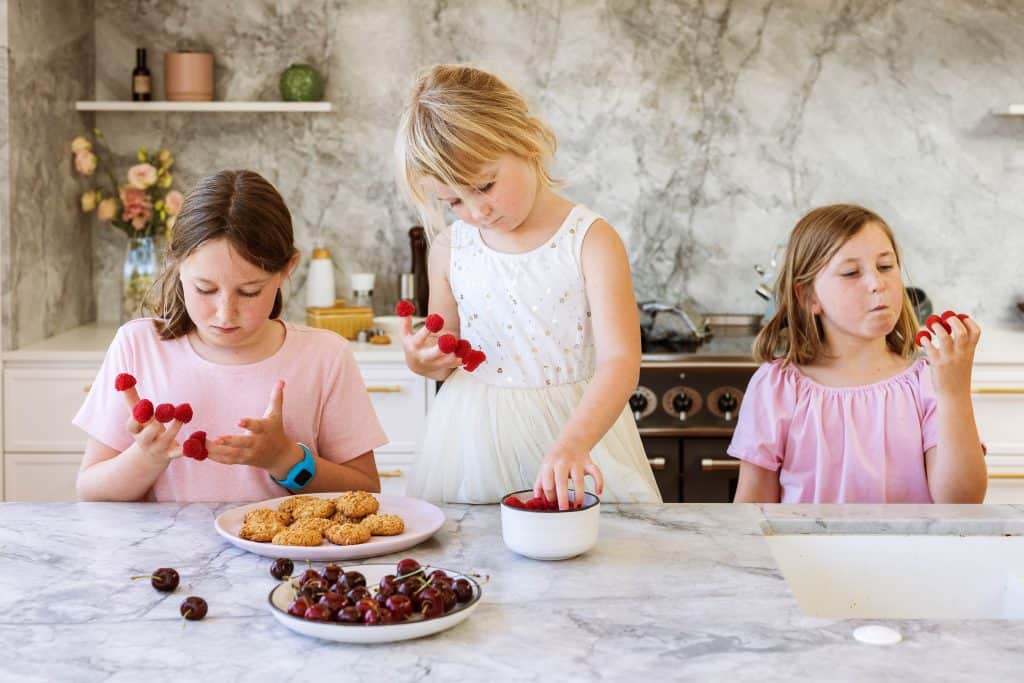
The origin of the Feeding Division of Responsibility
Ellyn Satter, a registered dietitian and family therapist, first introduced the Division of Responsibility in feeding. The basic idea behind this approach is that parents are responsible for what, when, and where a child eats, while the child is responsible for how much and whether they eat. This approach acknowledges that children have an innate ability to regulate their food intake and that they should be allowed to do so in a supportive environment.
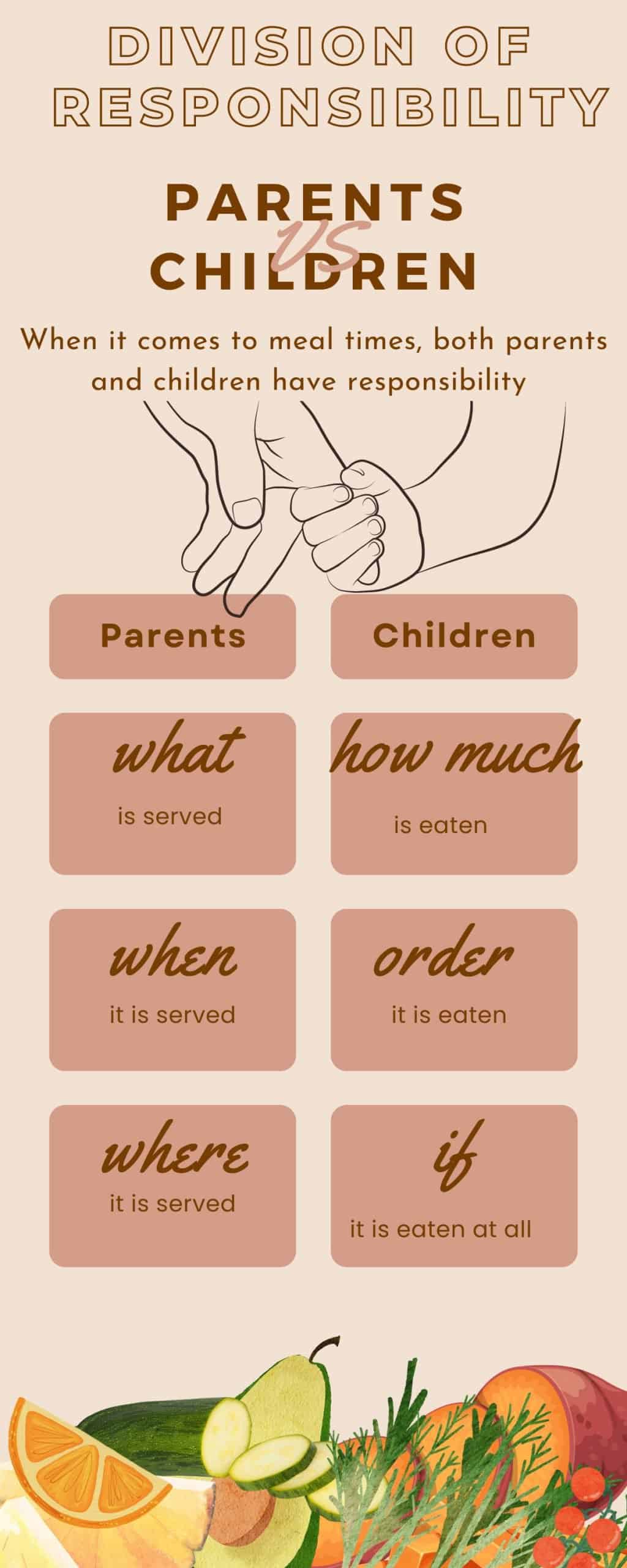
The Division of Responsibility in Practice
So what does this look like in practice? How do you actually apply the division of responsibility philosophy to meal times Here are some key principles of the Division of Responsibility in feeding:
- Parents decide what foods to offer: As a parent, it's your responsibility to provide a variety of healthy food choices for your child. This means offering a mix of fruits, vegetables, whole grains, protein and fats, at meals. You can involve your child in the process by letting them choose from a selection of healthy options, but ultimately it's up to you to decide what foods to offer.
- Parents decide when and where to offer food: Establishing regular meal and snack times can help your child develop a healthy eating pattern. It's also important to create a positive eating environment by sitting down together as a family, turning off the TV, and avoiding distractions.
- Children decide how much and whether to eat: Once the food is on the table, it's up to your child to decide how much they want to eat. Encourage your child to listen to their body's hunger and fullness cues, and don't force them to clean their plate or eat more than they want to.
By following the Division of Responsibility in feeding, you can help your child develop a healthy relationship with food. This approach empowers children to make their own food choices, while also providing structure and guidance from parents. It also helps to reduce mealtime stress and battles over food, which can be a common source of tension for families.
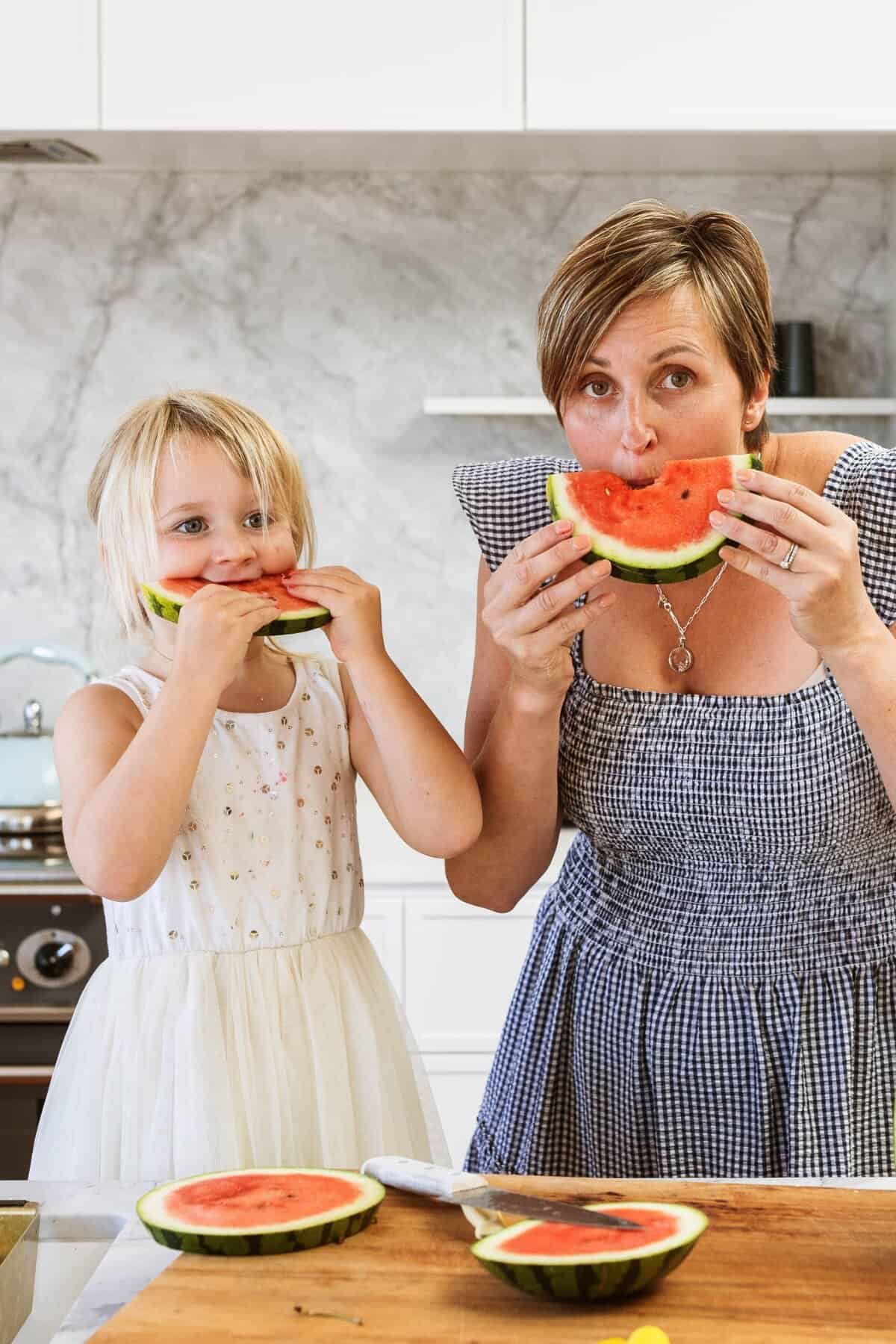
The magic mealtime phrase unlocked by the division of responsibility!
“You do not have to eat it.”
I find this one phrase so liberating when you are sitting down for a meal with a picky eater, or a child who is learning to like food. I use this phrase often.
For example, if your kid says, “Muuuummmmm! But I don’t like pumpkin!!” You can say, “That’s ok, you don’t have to eat it.”
And boom, just like that mealtime is much less stressful, thanks to the Division of Responsibility. You have chosen what to serve, and your child has chosen how much is eaten, which could of course in some instances be none.
Is it right for you?
Of course, every child is different, and there may be times when you need to make adjustments to the Division of Responsibility when it comes to your family meal times. Medical diagnoses and sensory needs may mean there may be shifts in the Division of Responsibility. The key is to be flexible and responsive to your child's changing needs.
As always I am acutely aware that there are many philosophies to feeding and raising children, and that different philosophies will resonate with different families. If the Division of Responsibility does not resonate with you then that is ok. This philosophy is the basis of how I serve meals and snacks to my kids, if it doesn't suit you that's fine, my recipes can still be useful and you can choose to serve them in the way that works best for you.
The division of responsibility can be utilised at any meal time, but you can take it a little further to create a really fun meal time atmosphere but letting children build their own dinners. Homemade Pizzas, Taco Bars, and Sushi Bowls are easy to prep, full of fun and create lots of happy meal time memories.
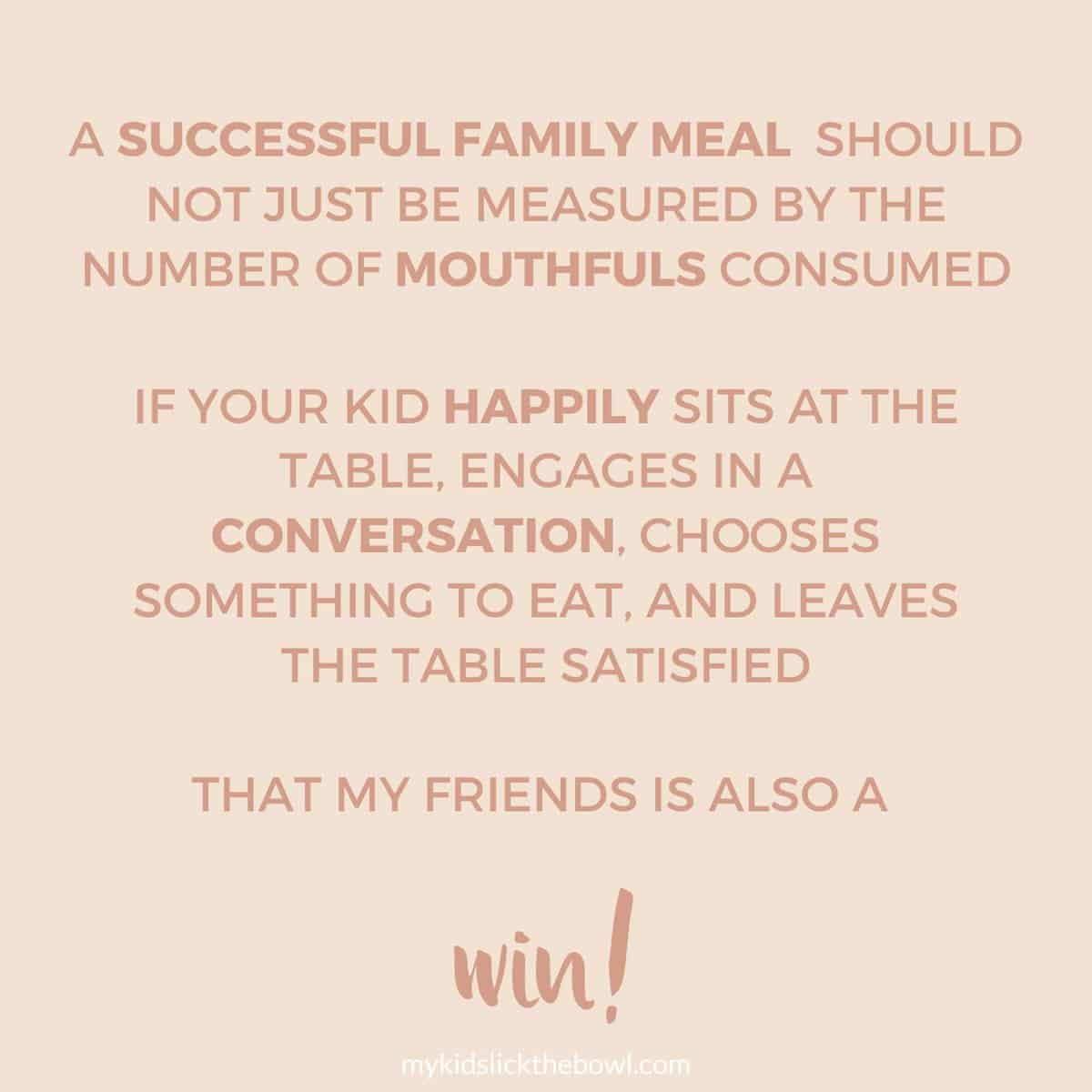
In summary
In summary, the Division of Responsibility in feeding is a powerful tool for promoting healthy eating habits in children. By establishing clear roles for parents and children at mealtime, you can create a supportive environment that encourages your child to make healthy food choices. So the next time you sit down to eat with your child, remember: you're in charge of what, when, and where, and your child is in control of how much and whether to eat.
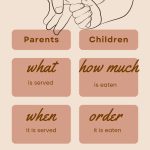
Quick Start Guide To BLW
Baby led weaning doesn’t need to be complicated, grab my quick start guide to begin your little ones food journey.